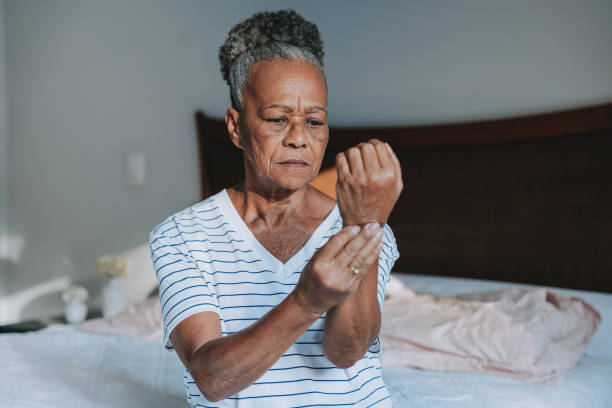Arthritis is one of the most common chronic conditions affecting seniors, and its impact on daily living can be both physically and emotionally taxing. Characterized by joint pain, stiffness, and decreased mobility, arthritis doesn’t just limit physical activity—it can also diminish independence, contributing to a reduced quality of life. While there is no cure for arthritis, managing its symptoms effectively is possible. One of the most proven and sustainable solutions lies in physical therapy. This intervention offers seniors a pathway to better mobility, pain relief, and a renewed sense of autonomy.
Contents
- 1 Understanding Arthritis and Its Impact on Seniors
- 2 Why Physical Therapy is a Game Changer
- 3 Key Benefits of Physical Therapy for Seniors with Arthritis
- 4 The Psychological and Social Benefits of Physical Therapy
- 5 Taking the First Step: What Seniors Should Expect
- 6 A Sustainable Approach to Arthritis Management
Understanding Arthritis and Its Impact on Seniors
Arthritis isn’t a singular disease but an umbrella term for over 100 conditions that cause joint inflammation. The most prevalent types among seniors are osteoarthritis, rheumatoid arthritis, and gout. Osteoarthritis, often associated with aging, results from wear and tear of the joints. Rheumatoid arthritis, an autoimmune condition, causes the body to attack its joint tissues, leading to inflammation and pain.
For seniors, arthritis can turn once-simple activities—like climbing stairs, gardening, or even walking short distances—into challenging tasks. The resulting physical limitations often lead to decreased activity levels, which in turn can worsen joint stiffness and accelerate muscle atrophy. This cycle of inactivity and discomfort not only exacerbates physical symptoms but also impacts mental well-being, sometimes leading to anxiety and depression.
Why Physical Therapy is a Game Changer
Physical therapy is not just an exercise regimen—it is a personalized, science-backed approach to managing the pain and functional limitations caused by arthritis. A licensed physical therapist designs a tailored program that addresses the specific joints affected, the severity of the condition, and the individual’s overall health status.
Unlike generic exercise routines, physical therapy provides guided, safe movements that help reduce joint stress while strengthening the muscles that support the joints. This dual benefit of pain reduction and enhanced stability is key to breaking the cycle of inactivity and deterioration that many seniors face.
Key Benefits of Physical Therapy for Seniors with Arthritis

Improved Joint Mobility and Flexibility
One of the primary goals of physical therapy is to restore as much joint mobility as possible. Through stretching and range-of-motion exercises, therapists help seniors maintain flexibility, which is critical in preserving joint function. Increased flexibility helps reduce stiffness, enabling seniors to perform daily activities with greater ease.
Strength Building for Better Support
Weak muscles place additional strain on arthritic joints, intensifying pain and reducing mobility. Physical therapy programs often incorporate strength training exercises designed to bolster the muscles surrounding affected joints. By improving muscle strength, seniors can better support their joints, reducing wear and tear and mitigating pain.
Pain Management without Over-Reliance on Medication
While medications can provide relief, they often come with side effects, especially for older adults who may already be managing multiple prescriptions. Physical therapy offers a non-pharmacological method of pain control. Techniques such as manual therapy, ultrasound therapy, and guided exercises can all help alleviate discomfort in a targeted manner without the risks associated with long-term medication use.
Enhancing Balance and Preventing Falls
Arthritis often compromises balance, increasing the risk of falls—a serious concern for seniors. Physical therapists integrate balance and coordination exercises into treatment plans to help stabilize posture and gait. This not only improves confidence but also reduces the likelihood of injuries that could further limit mobility.
Personalized Education and Lifestyle Modifications
Beyond exercises, physical therapy includes education on joint protection techniques, proper body mechanics, and lifestyle adjustments that can ease arthritis symptoms. Therapists guide seniors on how to modify their home environment, adopt ergonomic tools, and implement energy conservation strategies that make daily life more manageable and less painful.
The Psychological and Social Benefits of Physical Therapy
Engaging in physical therapy does more than just strengthen the body—it also offers significant psychological and social benefits. The process of setting goals, achieving small milestones, and regaining lost abilities can dramatically boost self-esteem and mental well-being.
Furthermore, participating in therapy sessions, whether one-on-one or in group settings, provides social interaction, which can help combat the isolation and loneliness that many seniors with chronic conditions experience. This holistic impact reinforces the value of physical therapy as part of a comprehensive arthritis management plan.
Taking the First Step: What Seniors Should Expect
For seniors considering physical therapy for arthritis, the first step involves a comprehensive evaluation by a licensed physical therapist. This assessment includes understanding the patient’s medical history, current mobility levels, pain points, and personal goals.
Based on this evaluation, the therapist crafts a customized program that may combine various techniques, ranging from aerobic conditioning and flexibility training to aquatic therapy and electrical stimulation. Regular reassessments ensure that the program evolves with the patient’s progress and changing needs.
A Sustainable Approach to Arthritis Management
Arthritis may be a permanent fixture in many seniors’ lives, but its limitations don’t have to be. With the right physical therapy interventions, seniors can reclaim a sense of control over their bodies and their routines. This proactive approach not only minimizes pain and enhances mobility but also supports emotional health and social engagement.
Physical therapy empowers seniors to navigate arthritis with resilience and confidence, transforming what could be a debilitating condition into a manageable aspect of aging. Through consistent effort and professional guidance, the journey with arthritis can still be one of strength, independence, and renewed vitality.
